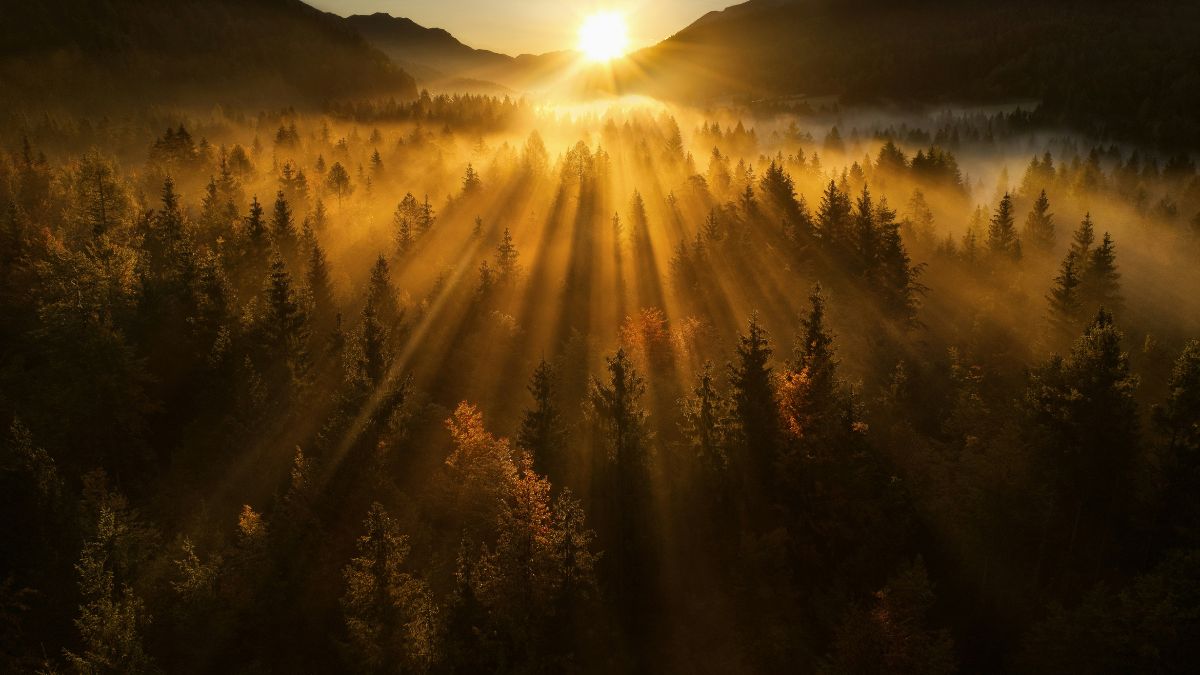

God’s Purposes from Genesis to Revelation
God’s goal has always been to be in unbroken fellowship with us and with His creation.
04/18/24
John Stonestreet Jared Hayden

When you hear the word “creation,” what comes to mind? For many Christians, the notion of creation is bound up in concerns about the age of the Earth or the important battles between intelligent design and naturalistic evolution. In these instances, considerations of creation are primarily focused on how the world was made.
As important as those questions are, there are also other things Christians must consider, especially in a culture like ours. Namely, we must consider the implications from both that God created the world and why God created the world. Another way to think about it is that Christians need to be clear on what creation is for and what our place is in it.
It’s tempting to see the biblical story of creation as God’s Plan A, something discarded on account of our sin. In this view, Christ’s work to redeem the world and the work of the Church is just the backup plan. In this view, the Christian life is often reduced to personal salvation, and the world around us to a kind of ticking time bomb waiting to be destroyed.
This, however, is not consistent with the deep hope that the Gospel offers.
According to author and theologian Edward Klink, God’s purposes have not changed since creation. In his latest book, The Beginning and End of All Things, Klink argues that “the goal of every Christian is not a departure to an otherworldly ‘heaven’ somewhere in the clouds but a ‘coming down’ of heaven to the earth … and the renewal of all creation.”
To get a better picture of God’s eternal purpose for His people, we must go back to the beginning, back to creation—not just how He created the world but that He created the world and why. As Klink shows, that’s exactly what Genesis describes: that God created the world and the implications of a creator. And of course, the place of humanity, God’s image bearers, within the creation.
He then traces God’s purposes for the world through the entirety of Scripture. He shows how the Bible’s unified picture of God’s work pulls together creation and redemption. He writes:
As the biblical story leaves the Old Testament and enters the New, the purposes of God’s creation project are made manifest in the person and work of Jesus Christ. What God began in the Garden of Eden in Genesis in God’s perfect providence had always been intended to be filled by Jesus the true Gardener in the garden of Easter.
From Genesis to Revelation, God’s goals for creation have been the same: that His world and especially His image bearers would be in unbroken fellowship with Him. Another way to say it is what was true about God’s plans for His creation in the beginning remains true today.
The redemption of the world through Christ and His Church isn’t a new idea. It’s simply the fulfillment of God’s original plan. God’s redeeming work does not scrap creation but restores and renews it. Remember that it is not only God’s people who are longing for Christ’s return, but it’s creation itself as in Romans 8.
In Christ, Christians are called to participate in God’s renewal of His creation as His representatives. The biblical story certainly includes our personal salvation in Jesus Christ. And if that’s all there was to it, that would be fantastic. But the better news is there’s even more to the story. In addition to what we are saved from, there is also what we are saved for.
I’m confident that Edward Klink’s book The Beginning and End of All Things will expand your theological understanding of the connection between creation and redemption, or Chapter 1 and 3 of the biblical story. And that’s why, this month, we’re giving away copies of the book with a gift of any amount to the Colson Center. To make your gift and claim your copy, go to colsoncenter.org/april.
This Breakpoint was co-authored by Jared Hayden. For more resources to live like a Christian in this cultural moment, go to breakpoint.org.
Have a Follow-up Question?
Up
Next

Related Content

© Copyright 2020, All Rights Reserved.













